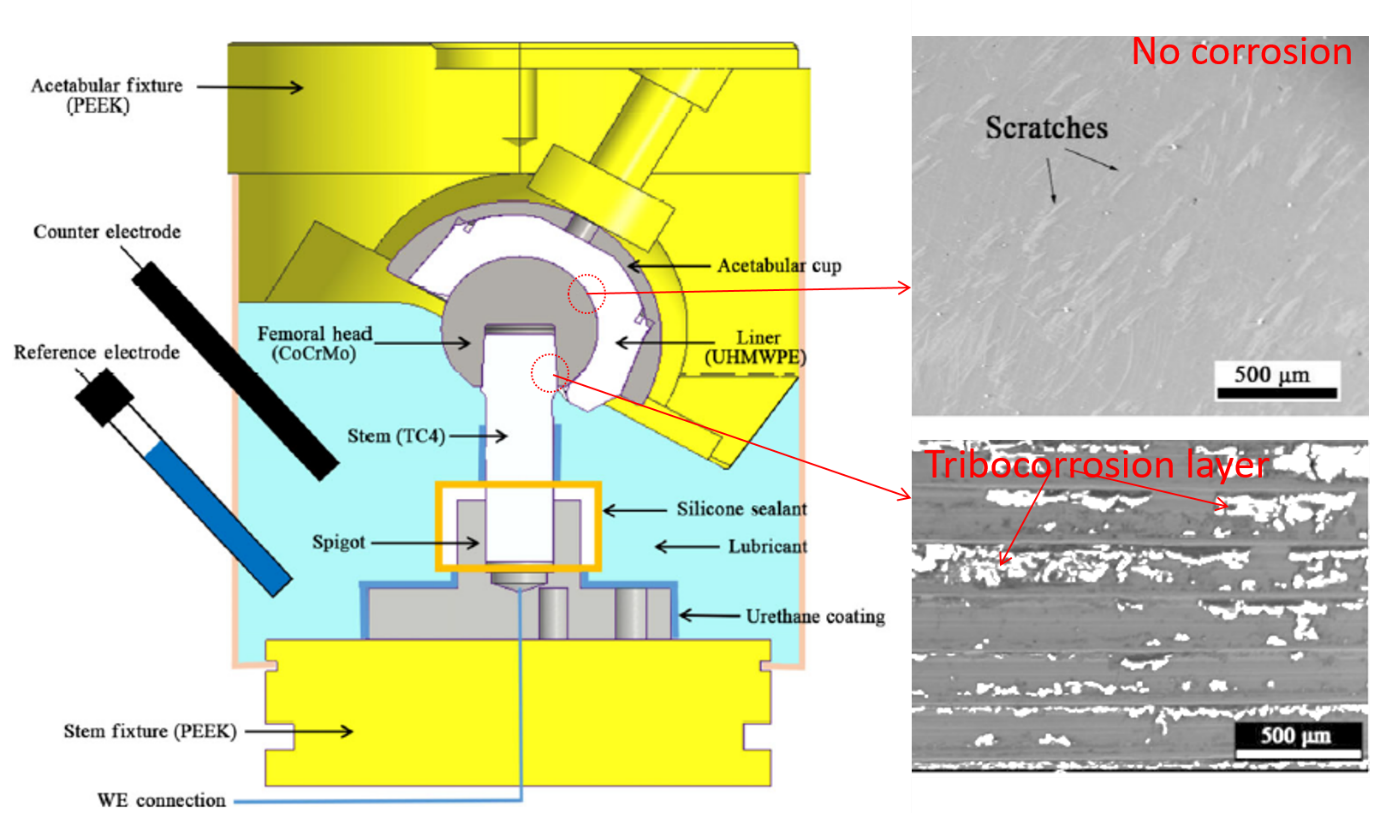According to NJR (2021) report, UK continues to have the largest use of metal on polymer (MoP) hip replacements. An increasing number of the prevalence of revision surgery caused by adverse local tissue reaction in MoP THRs has recently been reported which is 3.2% at a mean follow-up of over 10 years (Hussey and McGrory, 2017). The issues are associated with debris/ion generated due to combined action of wear and corrosion termed as tribocorrosion/biotribocorrosion. As a result, the impact of these influential factors need to be assessed prior to implantation.
There are numbers of research questions related to hip implant failure which could be addressed during this preclinical testing using modern hip simulator. Such as, which interfaces are more prone to corrosion degradation? What is the tribocorrosion mechanism? etc. Often the results from preclinical testing showed deviance from clinical outcomes due to various reasons including testing protocol that is required to follow.
To address the above questions, Yang et al. (2022) have conducted an experiment under walking gait cycles to investigate the long-term biotribocorrosion at the MoP THR. His study revealed that the modular taper/trunnion junction was the main cause of MoP THR biotribocorrosion, not the bearing surfaces. The presence of tribochemical reaction layer on the surface proved the hypothesis as shown in the above figure (taken from the Yang et al. (2022) article and modified). The formation of this tribolayer could be impacted by number of ways. Even the changing of serum could have significant effect on the corrosion rate which may lead to poor prediction for clinical application. One of the limitation of his study is the lower number of loading cycles than recommended by ISO which need to be dealt in future.
Featured header image: Graphical abstract produced from figures taken from Yang et al. (2022)
References
Hussey D K, McGrory B J. Ten-year cross-sectional study of mechanically assisted crevice corrosion in 1,352 consecutive patients with metal-on-polyethylene total hip arthroplasty. J Arthroplasty 32(8): 2546–2551 (2017)
National Joint Registry 18th Annual Report 2021, https://www.njrcentre.org.uk/

This article was written by MM Raihan as part of an ongoing series of scientific communications written and curated by BioTrib’s Early Stage Researchers.
Raihan is researching In-situ Measurement of Nano-scale Wear Utilising Advanced Sensors at the University of Leeds, UK.

